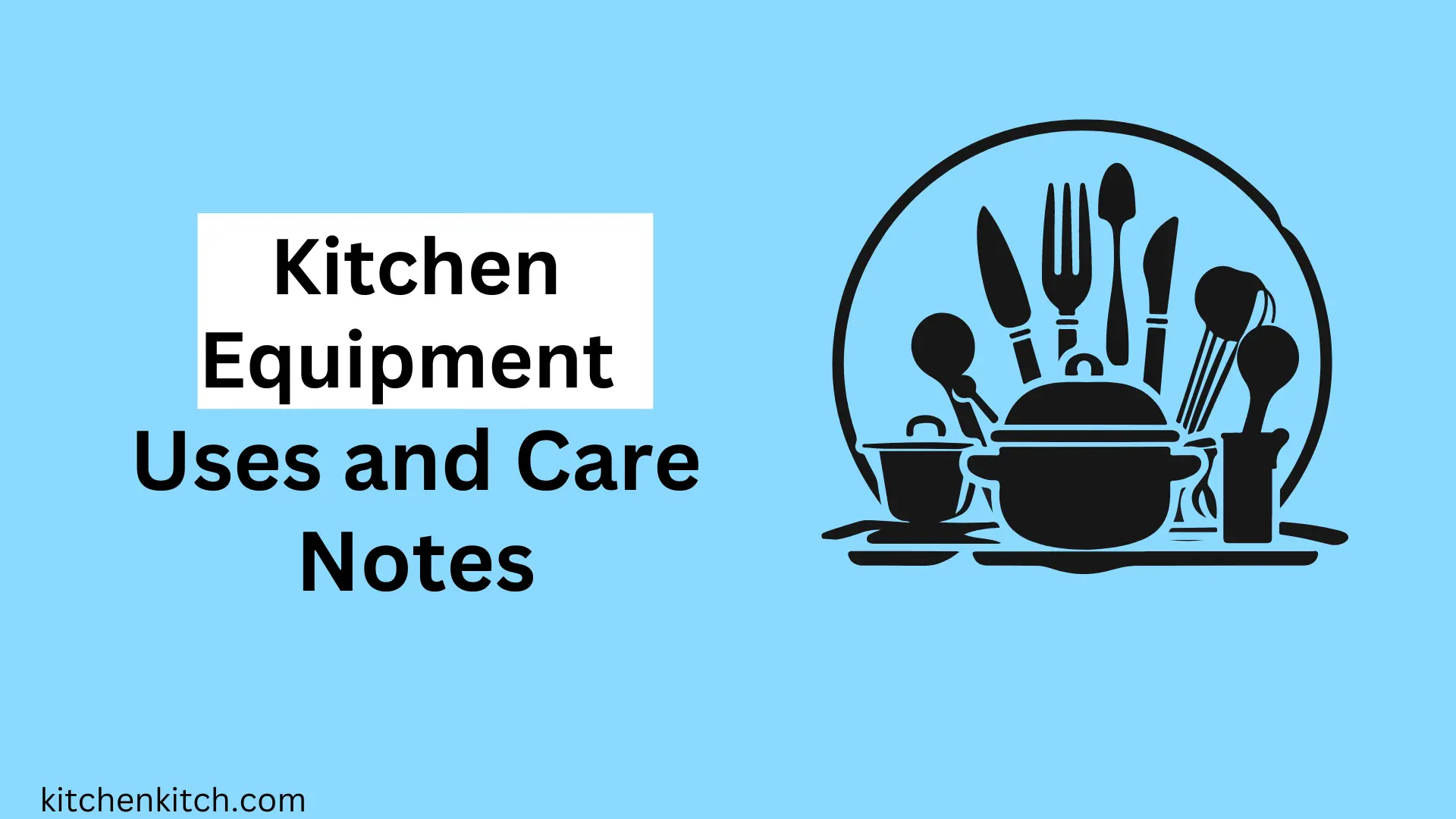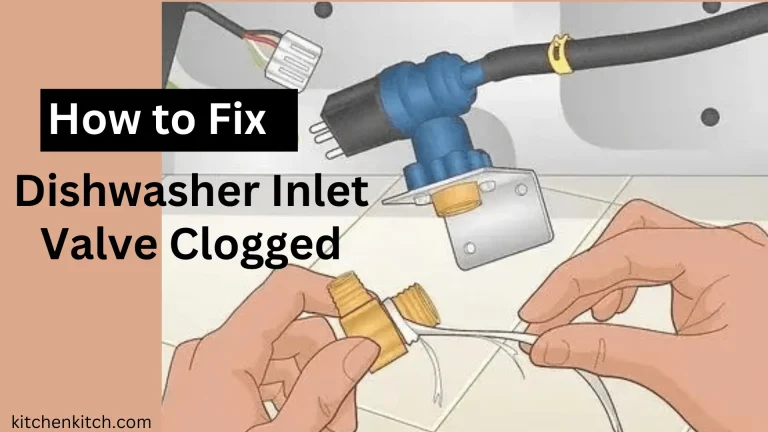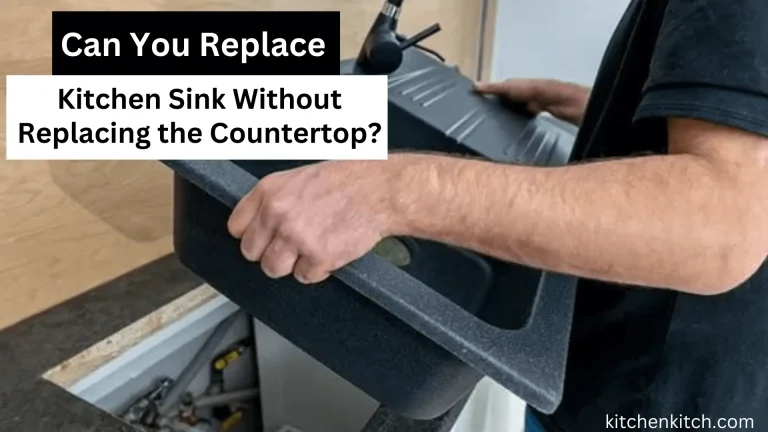Kitchen Equipment Uses and Care Notes: Guide
In the heart of every home lies the kitchen, the space where culinary creations come to life. Essential to this culinary magic are the tools and equipment that make cooking efficient and enjoyable. However, to keep these kitchen companions in top-notch condition, proper care and maintenance are crucial.
In this comprehensive guide, we’ll delve into the various kitchen equipment uses and care notes and to ensure longevity and efficiency.
1. Knives:
Knives are the backbone of any kitchen, used for slicing, dicing, chopping, and carving. Different types of knives serve specific purposes:
- Chef’s Knife: Ideal for chopping vegetables, slicing meat, and mincing herbs.
- Paring Knife: Perfect for intricate tasks like peeling fruits and deveining shrimp.
- Bread Knife: The serrated edge makes it suitable for cutting bread without squishing it.
- Utility Knife: Versatile for various cutting tasks and often used as an all-purpose knife.
Care Notes:
- Hand wash knives with mild soap immediately after use to prevent corrosion.
- Dry knives thoroughly to avoid rusting.
- Store knives in a knife block or on a magnetic strip to prevent dulling.
2. Pots and Pans
Pots and pans come in various materials like stainless steel, non-stick, cast iron, and copper, each with its unique benefits. They are essential for cooking everything from soups and sauces to stir-fries and roasts.
Care Notes:
- To prevent scratching, refrain from using metal utensils on non-stick surfaces.
- Season cast iron pans regularly to maintain their non-stick properties.
- Hand wash pots and pans whenever possible to preserve their coating and finish.
3. Small Appliances
Small kitchen appliances simplify cooking tasks and save time. Common small appliances include blenders, food processors, toasters, and coffee makers.
Care Notes:
- Follow manufacturer instructions for cleaning and maintenance.
- Regularly descale coffee makers and kettles to prevent buildup.
- Store small appliances in a clean, dry area when not in use to prevent dust accumulation.
4. Cutting Boards
Cutting boards provide a stable surface for cutting and chopping ingredients, preventing cross-contamination between different food items.
Care Notes:
- Use separate cutting boards for raw meat, poultry, fruits, and vegetables to avoid contamination.
- Ensure cutting boards are thoroughly washed with hot, soapy water following every usage.
- Sanitize cutting boards with a mixture of water and vinegar or bleach solution periodically.
5. Mixing Bowls
Mixing bowls are a staple in any kitchen, used for combining ingredients, marinating meats, and even serving dishes. They come in various materials like stainless steel, glass, and ceramic.
Uses:
- Mixing ingredients for batters, doughs, and salads.
- Marinating meats and vegetables.
- Serving salads, pasta, and snacks.
Care Notes:
- Choose non-reactive materials like stainless steel or glass for acidic ingredients.
- Avoid using abrasive cleaners or scrubbers to prevent scratching.
- Stack bowls carefully to prevent chipping or breaking.
6. Baking Sheets and Pans
Baking sheets and pans are essential for creating baked goods like cookies, cakes, and pastries. They come in different sizes and materials, including aluminum, stainless steel, and non-stick coatings.
Uses:
- Baking cookies, pastries, and sheet cakes.
- Roasting vegetables and meats.
- Creating savory dishes like sheet pan dinners.
Care Notes:
- Line pans with parchment paper or silicone mats to prevent sticking.
- Avoid using metal utensils on non-stick surfaces.
- Clean pans thoroughly after each use to prevent residue buildup.
7. Kitchen Utensils
Kitchen utensils encompass a wide range of tools used for cooking, serving, and food preparation. Common utensils include spatulas, ladles, tongs, and slotted spoons.
Uses:
- Stirring, flipping, and scraping ingredients.
- Serving soups, stews, and sauces.
- Handling and turning food items while cooking.
Care Notes:
- Choose utensils appropriate for the cookware to avoid scratching or damaging surfaces.
- Hand wash utensils with mild soap and warm water.
- Check utensils regularly for signs of wear and tear, such as loose handles or worn edges.
8. Food Storage Containers
Food storage containers are essential for keeping ingredients fresh and leftovers organized. They come in various shapes, sizes, and materials, including plastic, glass, and stainless steel.
Uses:
- Storing leftovers and prepping ingredients.
- Organizing pantry staples like grains, beans, and spices.
- Packing lunches and snacks for on-the-go convenience.
Care Notes:
- Choose food-safe containers free from BPA and other harmful chemicals.
- Wash containers with hot, soapy water after each use.
- Refrain from heating meals in plastic containers in the microwave unless they bear the label indicating they are safe for microwave use.
9. Kitchen Scales
Kitchen scales are indispensable for precise measurement of ingredients, especially in baking where accuracy is paramount. They come in digital and analog varieties, with varying weight capacities.
Uses:
- Measuring ingredients by weight for precise recipes.
- Portion control for balanced cooking and healthy eating.
- Weighing fruits, vegetables, and meats for accurate meal planning.
Care Notes:
- Keep scales clean and free from food residue to ensure accurate measurements.
- Store scales in a dry area away from moisture and humidity.
- Calibrate digital scales periodically according to manufacturer instructions.
10. Slow Cookers and Pressure Cookers
Slow cookers and pressure cookers are versatile appliances that simplify meal preparation and cooking. They offer convenience and flexibility for busy lifestyles.
Uses:
- Slow cookers are ideal for simmering soups, stews, and roasts over several hours.
- Pressure cookers cook food quickly under high pressure, reducing cooking times for dishes like beans, grains, and meats.
- Both appliances can be used to prepare one-pot meals with minimal effort and cleanup.
Care Notes:
- Follow manufacturer instructions for safe operation and maintenance.
- Clean removable parts like the inner pot and lid after each use.
- Store appliances in a clean, dry area with adequate ventilation.
You should also know how to get burnt milk off the stove.
Conclusion
In the bustling realm of the kitchen, proper care and maintenance of equipment are paramount. By understanding the uses of different kitchen tools and following simple care notes, you can ensure that your kitchen remains a hub of culinary creativity for years to come.







